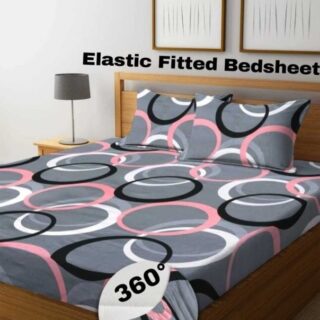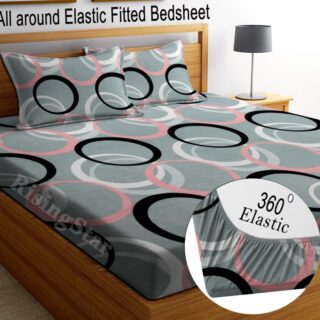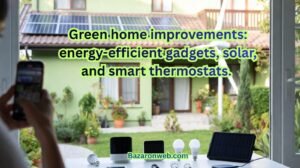Category
Popular Articles
- AI (9)
- Android (35)
- App Suggest (4)
- Apple (5)
- Apple TV (2)
- Bluetooth (2)
- Cars (2)
- ChatGpt (1)
- Did you know? (1)
- E-Commerce News (1)
- Ecommerce Websites business (7)
- Electronics Shopping (5)
- Fashion Tips (3)
- Gaming (3)
- Google Gemini (3)
- Hair Care Tips (2)
- How to (13)
- iCloud (1)
- Infotainment System (1)
- Iphone (93)
- Job Posting (1)
- Mac (18)
- Mobile Games (1)
- Netflix (1)
- Online Shopping Websites (2)
- Personal Finance Management (3)
- Product Reviews (3)
- Roku TV (4)
- Samsung (7)
- Shopping Tips (10)
- Tech (60)
- Windows 11 (4)
- Zero Waste (3)
Discounted Products
-
 Leo Creation 144 TC Cotton Double Jaipuri Prints Flat Bedsheet(Pack of 1, Blue, Gree, Red, Grey, Light Grey)
Leo Creation 144 TC Cotton Double Jaipuri Prints Flat Bedsheet(Pack of 1, Blue, Gree, Red, Grey, Light Grey)
₹2,999.00Original price was: ₹2,999.00.₹329.00Current price is: ₹329.00. -
 Home Garage 210 TC Cotton King Floral Fitted (Elastic) Bedsheet(Pack of 1, Grey)
Home Garage 210 TC Cotton King Floral Fitted (Elastic) Bedsheet(Pack of 1, Grey)
₹999.00Original price was: ₹999.00.₹299.00Current price is: ₹299.00. -
 Goodrik 140 TC Cotton Double 3D Printed Flat Bedsheet(Pack of 1, Brown)
Goodrik 140 TC Cotton Double 3D Printed Flat Bedsheet(Pack of 1, Brown)
₹499.00Original price was: ₹499.00.₹229.00Current price is: ₹229.00. -
 GLOBALSHOP 350 TC Microfiber Double Floral Flat Bedsheet(Pack of 1, Multicolor)
GLOBALSHOP 350 TC Microfiber Double Floral Flat Bedsheet(Pack of 1, Multicolor)
₹1,250.00Original price was: ₹1,250.00.₹263.00Current price is: ₹263.00. -
 RisingStar 250 TC Microfiber King Printed Fitted (Elastic) Bedsheet(Pack of 1, FITTED-ROUND-CIRCLES-PREMIUM)
RisingStar 250 TC Microfiber King Printed Fitted (Elastic) Bedsheet(Pack of 1, FITTED-ROUND-CIRCLES-PREMIUM)
₹2,299.00Original price was: ₹2,299.00.₹299.00Current price is: ₹299.00. -
 Home Garage 210 TC Cotton King Floral Fitted (Elastic) Bedsheet(Pack of 1, Fitted Black Green)
Home Garage 210 TC Cotton King Floral Fitted (Elastic) Bedsheet(Pack of 1, Fitted Black Green)
₹1,299.00Original price was: ₹1,299.00.₹299.00Current price is: ₹299.00. -
 Home Garage 180 TC Cotton King 3D Printed Flat Bedsheet(Pack of 1, White)
Home Garage 180 TC Cotton King 3D Printed Flat Bedsheet(Pack of 1, White)
₹999.00Original price was: ₹999.00.₹229.00Current price is: ₹229.00. -
 Home Sizzler 153 cm (5 ft) Polyester Room Darkening Window Curtain (Pack Of 2)(Floral, Maroon)
Home Sizzler 153 cm (5 ft) Polyester Room Darkening Window Curtain (Pack Of 2)(Floral, Maroon)
₹799.00Original price was: ₹799.00.₹299.00Current price is: ₹299.00. -
 Panipat Textile Hub 152.4 cm (5 ft) Polyester Window Curtain (Pack Of 2)(Solid, Aqua)
Panipat Textile Hub 152.4 cm (5 ft) Polyester Window Curtain (Pack Of 2)(Solid, Aqua)
₹1,899.00Original price was: ₹1,899.00.₹299.00Current price is: ₹299.00. -
 Home Sizzler 214 cm (7 ft) Polyester Semi Transparent Door Curtain (Pack Of 2)(Floral, Maroon)
Home Sizzler 214 cm (7 ft) Polyester Semi Transparent Door Curtain (Pack Of 2)(Floral, Maroon)
₹1,199.00Original price was: ₹1,199.00.₹399.00Current price is: ₹399.00. -
 Home Sizzler 153 cm (5 ft) Polyester Room Darkening Window Curtain (Pack Of 2)(Floral, Brown)
Home Sizzler 153 cm (5 ft) Polyester Room Darkening Window Curtain (Pack Of 2)(Floral, Brown)
₹799.00Original price was: ₹799.00.₹299.00Current price is: ₹299.00. -
 Stella Creations 214 cm (7 ft) Polyester Room Darkening Door Curtain (Pack Of 2)(Abstract, Brown)
Stella Creations 214 cm (7 ft) Polyester Room Darkening Door Curtain (Pack Of 2)(Abstract, Brown)
₹1,299.00Original price was: ₹1,299.00.₹449.00Current price is: ₹449.00. -
 Homefab India 152.5 cm (5 ft) Polyester Room Darkening Window Curtain (Pack Of 2)(Floral, Light Blue)
Homefab India 152.5 cm (5 ft) Polyester Room Darkening Window Curtain (Pack Of 2)(Floral, Light Blue)
₹1,199.00Original price was: ₹1,199.00.₹319.00Current price is: ₹319.00. -
 Urban Home 214 cm (7 ft) PVC Transparent Door Curtain Single Curtain(Solid, Off White)
Urban Home 214 cm (7 ft) PVC Transparent Door Curtain Single Curtain(Solid, Off White)
₹699.00Original price was: ₹699.00.₹203.00Current price is: ₹203.00. -
 Panipat Textile Hub 213 cm (7 ft) Polyester Door Curtain (Pack Of 2)(Solid, Brown)
Panipat Textile Hub 213 cm (7 ft) Polyester Door Curtain (Pack Of 2)(Solid, Brown)
₹1,199.00Original price was: ₹1,199.00.₹349.00Current price is: ₹349.00.
Affiliate Links
Promotion

Hello, I’m Jessica. As a mom, a busy professional, and the chief operating officer of my household, I’m always looking for ways to make our home life a little smoother, a little smarter, and a lot more cost-effective. If you’re like me, you’ve probably felt the pinch of rising energy bills and wondered what you can actually do about it.
The good news is that creating a greener, more efficient home doesn’t require a complete lifestyle overhaul. Thanks to some incredible advancements in technology, it’s now about making smarter choices with the gadgets and systems we use every day. From simple plugs that stop energy vampires in their tracks to entire solar systems that can power your home, the path to savings is more accessible than ever.
This guide will walk you through the three pillars of a modern green home: energy-efficient gadgets for quick wins, smart thermostats for automated savings, and solar power for long-term energy independence. We’ll explore practical options, clear up the financials, and help you build a comfortable, sustainable home that aligns with your life and budget.
🌱 Energy-Efficient Gadgets: Quick Wins for Instant Savings
Let’s start with the easy stuff. These are the gadgets you can install in an afternoon that start paying you back almost immediately. They’re perfect for dipping your toes into the smart home world without a major upfront investment.
-
Smart Plugs and Power Strips: You might not realize it, but many of your electronics are secretly draining power even when they’re “off.” This is called phantom or “vampire” energy load, and it can add up to real money. A smart plug, like the TP-Link Kasa Smart Wi-Fi Plug Slim, lets you turn any outlet into a connected one . You can set schedules to automatically cut power to your entertainment center overnight, or use a smart power strip to control multiple devices at once. Some even monitor the energy usage of whatever you plug into them, giving you incredible insight into your consumption habits .
-
Smart Lighting: Gone are the days of walking around the house to turn off all the lights. Smart light bulbs, such as the AiDot Linkind Wi-Fi Matter Smart Light Bulb, are a brilliant upgrade . You can control them from your phone, set schedules so they turn on and off automatically, and even adjust their color and brightness to set the perfect mood. The best part? They use up to 90% less energy than traditional incandescent bulbs and last for years, making them one of the highest-return investments you can make .
-
Advanced Power Management: For those ready to take control of their home’s entire energy flow, 2025 has introduced some groundbreaking options. The Span Smart Panel and Savant Power System are next-generation electrical panels that replace your standard one . They give you app-based control over every single circuit in your home. You can see exactly which appliances are using the most power, turn them off remotely, or even schedule your dishwasher to run only when energy rates are lowest. It’s a bigger investment, but it offers the ultimate level of control and optimization .
🌡️ Smart Thermostats: The Brain of Your Home’s Climate
If your HVAC system is the heart of your home’s comfort, a smart thermostat is the brain. It’s arguably the single most effective gadget for reducing your heating and cooling bills, which typically make up nearly half of a home’s energy use .
These devices do much more than just let you adjust the temperature from your phone. They learn your schedule, sense when you’re home or away, and make automatic adjustments to save energy without sacrificing your comfort. Most people save between 10-15% on their annual heating and cooling bills, meaning the device can often pay for itself in just a year or two .
Top Smart Thermostat Picks for 2025
With several excellent models on the market, here’s a breakdown of the best options to suit different needs and budgets.
| Thermostat Model | Best For | Key Features | Potential Savings |
|---|---|---|---|
| Ecobee Smart Thermostat Premium | The All-Round Power User | Built-in smart speaker, air quality monitor, remote room sensors, security system integration. | High (up to 15-23% on HVAC) |
| Google Nest Learning Thermostat | AI-Powered Efficiency | Learns your schedule automatically, creates custom temperature routines to maximize savings. | High (10-12% on heating, 15% on cooling) |
| Amazon Smart Thermostat | Budget-Conscious Alexa Homes | Reliable, easy-to-use, and very affordable for basic scheduling and voice control. | Good (up to 10% on HVAC) |
| Honeywell Home T9 | Multi-Room Consistency | Uses smart room sensors to focus on the rooms you’re actually using, ensuring even comfort. | Good (up to 10% on HVAC) |
Beyond the models above, look for features that match your lifestyle. Geofencing uses your phone’s location to switch to an energy-saving “Away” mode when you leave and return to your comfort setting as you head home . Remote room sensors help manage hot or cold spots, and maintenance alerts can warn you about HVAC issues or remind you to change your air filter, which also keeps your system running efficiently .
☀️ Solar Power: Taking Control of Your Energy Source
For the ultimate step in green home improvement, nothing beats generating your own clean electricity. While it’s a significant long-term investment, the economics of solar have never been better, offering both dramatic utility savings and increased energy independence.
Understanding the Investment
The cost of a solar system is highly personal, depending on your home’s size, location, and energy needs. In 2025, the average cost for a residential system in the U.S. is between $25,000 and $45,000 before incentives . However, that national average can be a bit misleading. Data from EnergySage shows the typical system cost is around $29,649 for an average-sized system .
It’s crucial to look beyond the sticker price. Where does that money actually go?
| Cost Component | Average Cost (for a $29,649 system) | % of Total Cost |
|---|---|---|
| Solar Panels | $3,692 | 12% |
| Inverter(s) | $3,021 | 10% |
| Installation Labor | $2,014 | 7% |
| Sales, Marketing & Overhead | $8,503 | 29% |
| Permitting & Interconnection | $2,350 | 8% |
| Installer Profit | $3,133 | 11% |
| Other (Racking, Wiring, Supply Chain, Tax) | $7,936 | ~27% |
Source: Adapted from a National Renewable Energy Laboratory (NREL) study, via EnergySage .
The fantastic news is that this initial investment is heavily offset by incentives. The federal government offers a 30% Investment Tax Credit (ITC), which alone can knock nearly $9,000 off that average system price . Many states and local utilities offer additional rebates and performance-based incentives, making the final out-of-pocket cost much more manageable.
Key Considerations Before You Go Solar
-
Your Long-Term Savings: Solar is an investment that pays off over time. Most homeowners save anywhere from $37,000 to $148,000 over 25 years by slashing or eliminating their electricity bills . If you finance with a loan, many find their monthly loan payment is less than their old utility bill, creating positive cash flow from day one .
-
Battery Storage: The Game Changer: While not essential, adding a battery like the EcoFlow DELTA Pro 3 transforms your solar system . It stores excess energy produced during the day for use at night or during a power outage, giving you true energy independence and peace of mind. This addition can cost between $3,000 and $20,000 but is becoming increasingly valuable .
-
Your Home’s Suitability: A south-facing roof with minimal shading is ideal. The size, shape, and pitch of your roof will determine how many panels you can install and how efficiently they’ll perform .
Building Your Green Home Action Plan
Transforming your home can feel daunting, so it’s best to approach it in stages. You don’t have to do everything at once.
-
Start with the “Quick Wins”: This month, focus on low-cost, high-impact changes. Swap out a few lights for LEDs, install a smart plug or two, and get serious about sealing those drafty windows and doors with caulk and weatherstripping. These simple actions can save you 10-20% on your heating and cooling bills right away .
-
Move to “Smart Upgrades”: In the next few months, consider investing in a smart thermostat. The savings on your HVAC costs will quickly help recoup the cost. If you’re handy, many of these are DIY-friendly; if not, professional installation is relatively affordable.
-
Plan for the “Major Investments”: For solar, insulation upgrades, or a heat pump, start with research. A great first step is to get a professional home energy audit . A certified auditor will use tools like blower doors and thermal cameras to pinpoint exactly where your home is wasting energy. This gives you a personalized roadmap for your upgrades, ensuring you spend your money on the improvements that will make the biggest difference.
Data Driven Insights
Creating a greener home isn’t just about sustainability—it’s about lowering monthly expenses, improving comfort, and investing in technologies that support long-term energy independence. Over the past decade, U.S. households have increasingly shifted toward energy-efficient upgrades, largely driven by rising electricity costs, new tax incentives, and growing awareness of climate impact.
According to the U.S. Energy Information Administration, the average American household now spends over $2,000 per year on energy, with heating and cooling alone accounting for 42% of total usage. That’s exactly why smart thermostats, efficient appliances, and solar power systems have moved from “nice-to-have” gadgets to essential home upgrades.
Let’s break down the top three green improvements reshaping modern homes—and the numbers behind them.
1. Smart Thermostats: Small Device, Big Savings
Smart thermostats like Ecobee and Nest continue to lead the energy-savings category. The Environmental Protection Agency reports that upgrading to a smart thermostat can reduce heating and cooling costs by 10%–23% annually, depending on household patterns and climate.
Why they’re effective:
- AI-powered scheduling reduces wasteful heating/cooling when no one’s home.
- Remote temperature control helps prevent overuse during peak demand hours.
- Learning algorithms identify efficiency opportunities based on your habits.
In a typical U.S. home, that means potential savings of $180 to $400 per year—all from a device that usually pays for itself within the first 12 months.
For families balancing comfort and cost, this is often the easiest and most impactful upgrade.
2. Energy-Efficient Gadgets and Appliances
The shift toward ENERGY STAR–rated appliances has accelerated. As of 2024, nearly 90% of new refrigerators and dishwashers sold in the U.S. meet efficiency standards. These appliances can reduce electricity consumption by up to 25%, and in some categories—like heat-pump dryers—the savings reach 50%.
High-impact upgrades include:
- Induction cooktops (use 5–10% less energy than electric coils and are safer).
- LED lighting, now using 75% less energy and lasting 25x longer.
- Smart plugs that monitor vampire load and cut unnecessary standby power.
Household “phantom energy”—the electricity used by idle devices—can cost up to $165 per year, according to Stanford University research. Smart energy-monitoring gadgets are helping homeowners eliminate this waste without changing daily habits.
3. Residential Solar: The Fastest-Growing Home Upgrade
Solar has shifted from niche investment to mainstream home improvement. The Solar Energy Industries Association reports that U.S. residential solar adoption grew more than 30% year-over-year, driven by falling panel prices and federal incentives.
Key reasons homeowners are investing:
- 30% federal tax credit (ITC) available through 2032
- Lower electricity bills (average savings: $1,200–$2,400 per year)
- Increased property value (studies show 4–5% resale boost)
- Greater independence from grid instability and rising utility rates
In states like California, Texas, Arizona, and Florida, solar systems often pay for themselves in 6–9 years. Many homeowners now pair solar with battery backup systems, which can supply power during outages and reduce reliance on peak-rate electricity.
Looking Ahead
Energy-efficient home upgrades are no longer futuristic—they’re financially practical, widely accessible, and supported by strong data. Whether it’s installing a smart thermostat, switching to efficient appliances, or taking the leap into solar, the return on investment is clearer than ever.
The modern American home is becoming smarter, cleaner, and more cost-efficient—one sustainable upgrade at a time.
A Final Word from Jessica
Embracing green home improvements is a journey, not a destination. Every smart plug, every LED bulb, and every degree of optimized heating and cooling adds up. It’s about making conscious choices that benefit your family’s budget and our collective future. I hope this guide has shown you that a greener, more efficient home isn’t just a dream for the future—it’s a very achievable, practical reality you can start building today.
Written by Bazaronweb
Latest Tech Articles
- Retirement Planning for Younger Professionals in the U.S.: Roth IRAs, ESG Funds, and More.

- Budgeting in 2026: high inflation, investing, and building savings.

- Smart Money Management – Side hustle ideas for different age groups (Gen Z, Millennials, mid-career).

- Eco-Conscious Parenting: Raising Kids With Sustainability in Mind

- Green home improvements: energy-efficient gadgets, solar, and smart thermostats.

Products
-
![Apple Watch Ultra 3 [GPS + Cellular 49mm] Running & Multisport Smartwatch w/Rugged Titanium Case w/Black Titanium Milanese Loop - M. Satellite Communications, Advanced Health & Fitness Tracking](https://bazaronweb.com/retailstores/wp-content/uploads/2025/09/apple-watch-320x320.jpg) Apple Watch Ultra 3 [GPS + Cellular 49mm] Running & Multisport Smartwatch w/Rugged Titanium Case w/Black Titanium Milanese Loop - M. Satellite Communications, Advanced Health & Fitness Tracking
Apple Watch Ultra 3 [GPS + Cellular 49mm] Running & Multisport Smartwatch w/Rugged Titanium Case w/Black Titanium Milanese Loop - M. Satellite Communications, Advanced Health & Fitness Tracking
-
 Apple iPad mini (A17 Pro): Apple Intelligence, 8.3-inch Liquid Retina Display, 256GB, Wi-Fi 6E, 12MP Front/12MP Back Camera, Touch ID, All-Day Battery Life — Purple
Apple iPad mini (A17 Pro): Apple Intelligence, 8.3-inch Liquid Retina Display, 256GB, Wi-Fi 6E, 12MP Front/12MP Back Camera, Touch ID, All-Day Battery Life — Purple
-
 Apple AirPods Max Wireless Over-Ear Headphones, Active Noise Cancelling, Transparency Mode, Personalized Spatial Audio, Dolby Atmos, Bluetooth Headphones for iPhone – Space Gray
Apple AirPods Max Wireless Over-Ear Headphones, Active Noise Cancelling, Transparency Mode, Personalized Spatial Audio, Dolby Atmos, Bluetooth Headphones for iPhone – Space Gray
-
 Apple AirPods Pro 2 Wireless Earbuds, Active Noise Cancellation, Hearing Aid Feature, Bluetooth Headphones, Transparency, Personalized Spatial Audio, High-Fidelity Sound, H2 Chip, USB-C Charging
Apple AirPods Pro 2 Wireless Earbuds, Active Noise Cancellation, Hearing Aid Feature, Bluetooth Headphones, Transparency, Personalized Spatial Audio, High-Fidelity Sound, H2 Chip, USB-C Charging
-
 Leo Creation 144 TC Cotton Double Jaipuri Prints Flat Bedsheet(Pack of 1, Blue, Gree, Red, Grey, Light Grey)
Leo Creation 144 TC Cotton Double Jaipuri Prints Flat Bedsheet(Pack of 1, Blue, Gree, Red, Grey, Light Grey)
₹2,999.00Original price was: ₹2,999.00.₹329.00Current price is: ₹329.00.
Leave a Reply